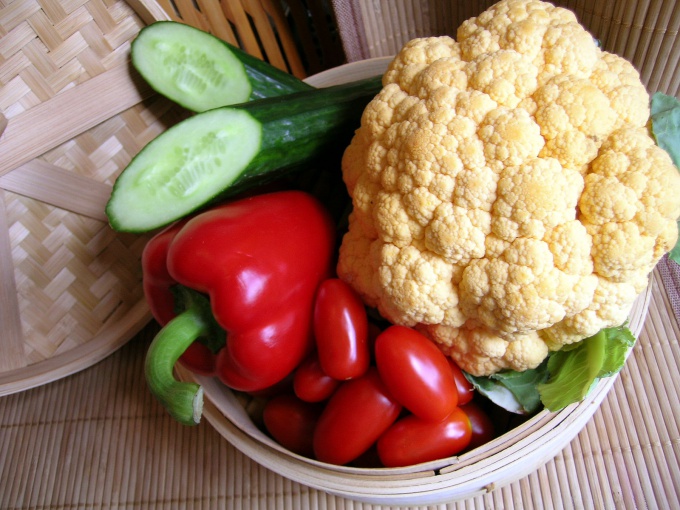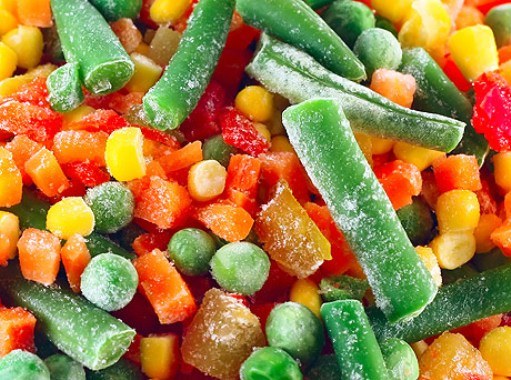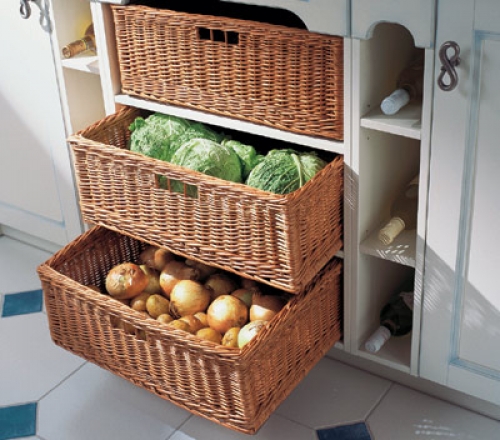How to store vegetables at home
How to store vegetables at home
In order to make vegetables that are dailyappear on our table, in the menu, pleased with its freshness, we must learn to store them. It should also be understood that to any vegetable should be an exclusively individual approach. Compliance with these rules will also help to save a significant budget.

Storage space
The storage location of each vegetable depends on its need for temperature, the amount of light and humidity.
Some vegetables need low temperatureair, it's beets, cabbage, broccoli, cauliflower, turnips, celery, carrots, Brussels sprouts. Some on the contrary, do not tolerate the cold, it's potatoes, green tomatoes, melon.
Variants of places where you can store vegetables there is enough: it's a refrigerator, and pantries, and containers, and a garage, so it's important to know how to store what vegetables.
Individual approach
Potatoes likes dark and cool places with goodair circulation. The best places are the cellars and garages. If the potatoes are stored in the refrigerator, then it risks acquiring a sweet taste, and if the storage conditions are violated, the potato will quickly germinate.
Carrot well preserved in the cold. To retain moisture, it must be packed in a cellophane bag and stored in a refrigerator. Carrots should be cleaned immediately before use.
Cabbage, broccoli, cauliflower stored in the refrigerator for a long time, but it is desirable to consume them within a week.
Tomatoes - great fuss. They are stored at room temperature and in no case do not wash. Cold not only breaks the structure of tomatoes, but also completely kills their aroma and taste.
Eggplant not stored for long. For 2 days you need to use their reserves. If the period of their storage requires more time, then they must be placed in a dark cool place.
Green onions has a rather watery structure. Before you put it in storage in the refrigerator, you need to wrap it in paper or foil.
Asparagus stored in a refrigerator, pre-wrapped in a damp cloth. A day, or even two in such conditions, asparagus can even continue to grow.
Mushrooms do not like heat and light, and therefore they will be satisfied with the lower shelf of the refrigerator. But they need to be washed only before processing.
Cucumbers, squash prefer places dark and cool, their refrigerator just fine. More than a week to store these vegetables should not be.
Celery will settle in the refrigerator even for a week, but you need to take into account its strong specific smell, and therefore it is good to pack, maybe even airtight.
Corn should be used as a maximum the next day.
Peppers to avoid molding should be stored unwashed in the refrigerator, but in no case not packed in cellophane. For them, a container for vegetables.
Salad and greenery washed well, dried and placed first in a paper, and then in a cellophane bag. For three days they should be eaten.
Garlic feels good in the fridge. Chilled it and cleaned easier.
Nuances of storage
You can not store onion, potatoes, garlic and pumpkin together. Just keep them away from other vegetables as well.
Green vegetables ripen at room temperature, only then they are placed in the refrigerator.
It should be ensured that the vegetables do not become moldy, otherwise the mold will quickly infect and healthy foods.







